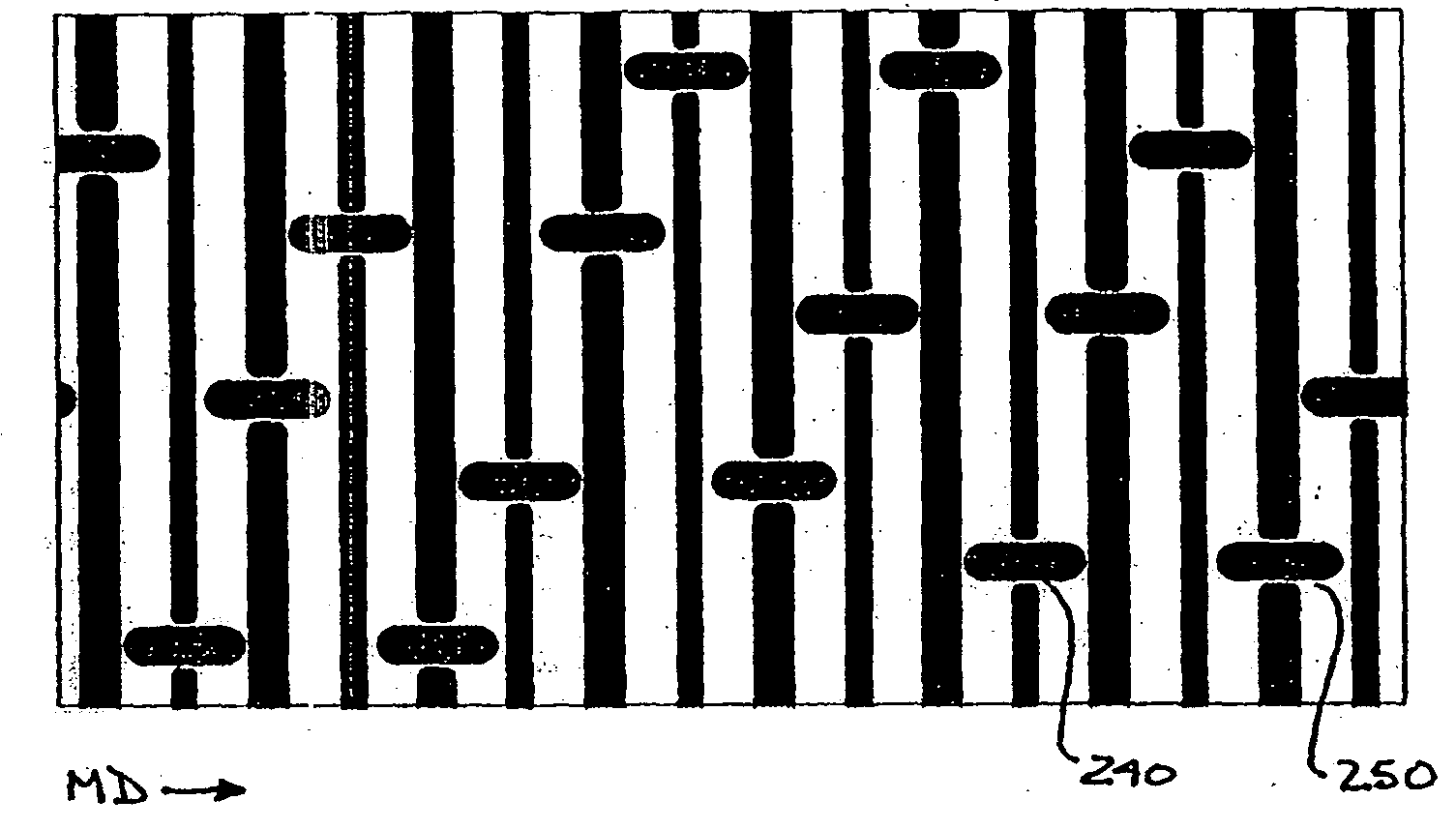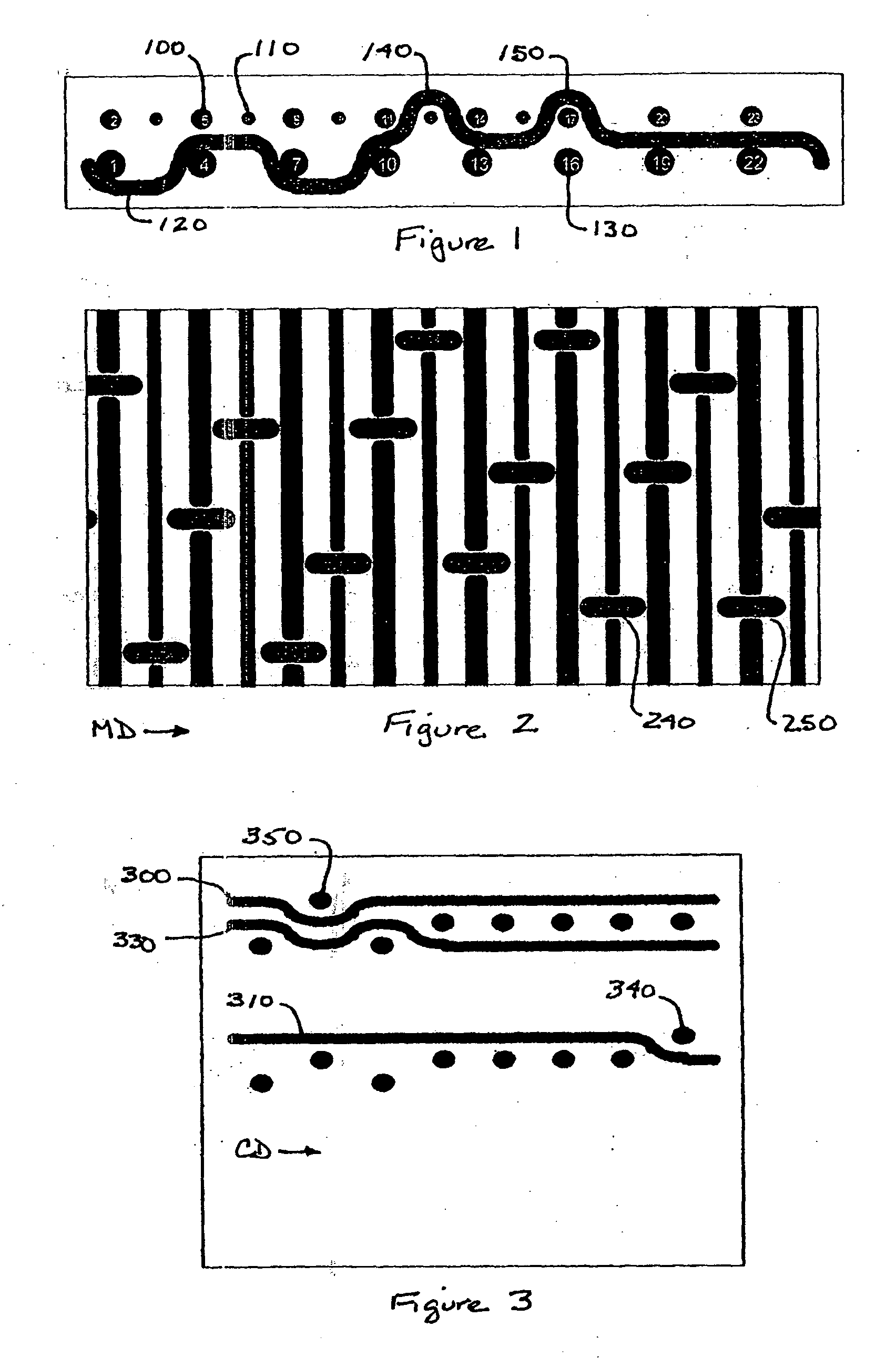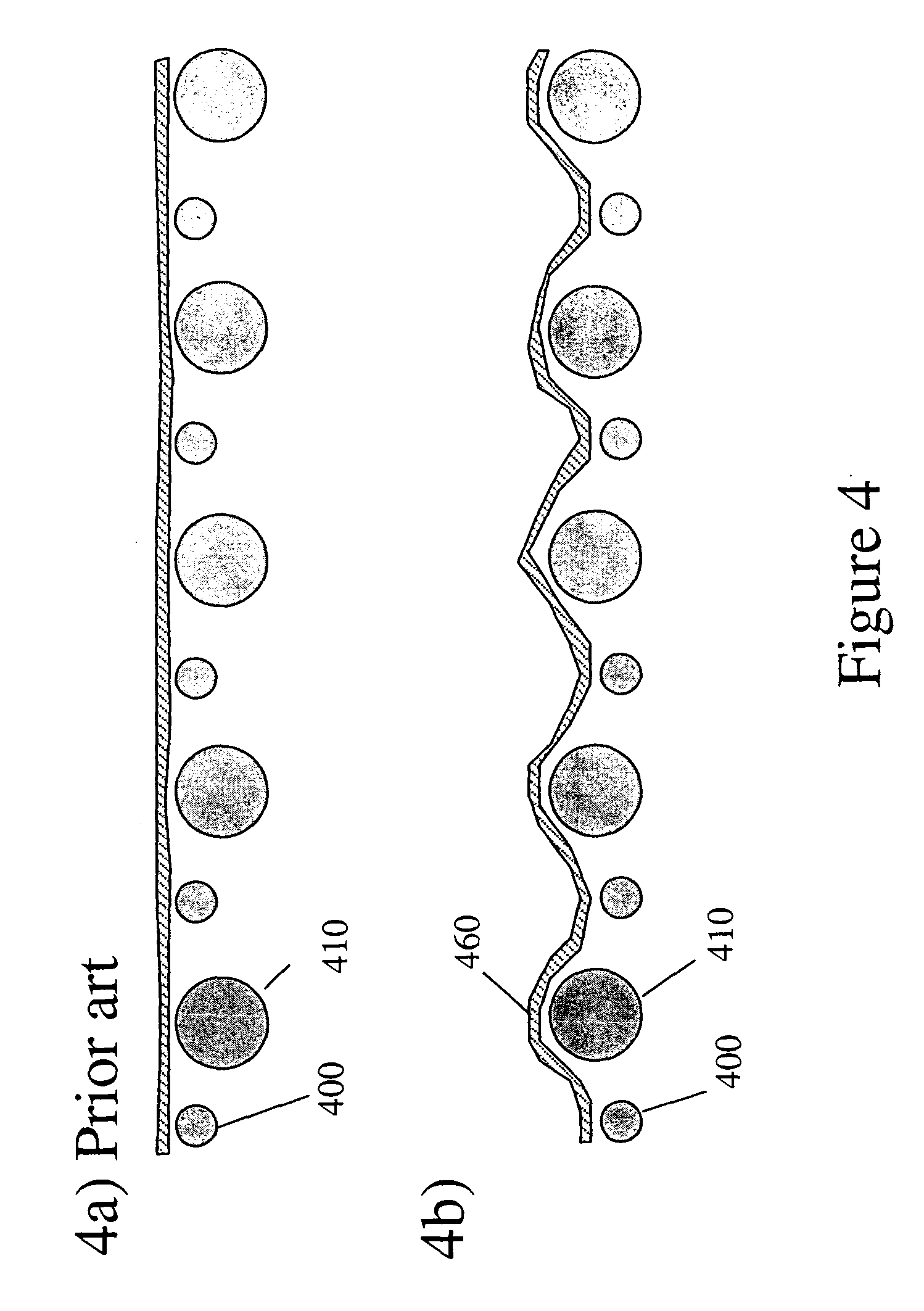Textured surface of a tissue forming fabric to generate bulk, cross directional tensile, absorbency, and softness in a sheet of paper
a tissue and fabric technology, applied in the field of papermaking arts, can solve the problems of short fabric life, common fabric deficiency, poor sheet fiber support, etc., and achieve the effect of good sheet fiber support and fabric stability properties
- Summary
- Abstract
- Description
- Claims
- Application Information
AI Technical Summary
Benefits of technology
Problems solved by technology
Method used
Image
Examples
Embodiment Construction
[0045]FIG. 1 is a schematic cross-sectional view in the CD of an example fabric pattern in accordance with the teachings of the present invention. As shown, the present invention is a multi-layer tissue forming fabric constructed so that the top forming surface has topographical differences measured as a plane difference between two top weft yarns. The plane difference—the difference in height between two adjacent weft yarns—must be greater than zero. The present invention uses at least two different diameter CD weft yarns 100, 110 and positions them on the same contour in the forming surface to create the forming side plane difference in the tissue forming fabric. The plane difference in the forming surface generates bulk, cross directional tensile, absorbency, and softness in a sheet of tissue, napkin, or towel paper. The present invention is preferably a double layer or triple stacked shute (TSS) double layer fabric. However, the present invention is applicable to any multi-layer...
PUM
| Property | Measurement | Unit |
|---|---|---|
| Diameter | aaaaa | aaaaa |
| Size | aaaaa | aaaaa |
| Shape | aaaaa | aaaaa |
Abstract
Description
Claims
Application Information
 Login to View More
Login to View More - Generate Ideas
- Intellectual Property
- Life Sciences
- Materials
- Tech Scout
- Unparalleled Data Quality
- Higher Quality Content
- 60% Fewer Hallucinations
Browse by: Latest US Patents, China's latest patents, Technical Efficacy Thesaurus, Application Domain, Technology Topic, Popular Technical Reports.
© 2025 PatSnap. All rights reserved.Legal|Privacy policy|Modern Slavery Act Transparency Statement|Sitemap|About US| Contact US: help@patsnap.com



